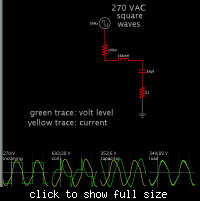Follow along with the video below to see how to install our site as a web app on your home screen.
Note: This feature may not be available in some browsers.
@Gvbhati
Can have a look of inverters that are available in the market including the one you want to build....
You should probably begin with your power quality requirements.
Things like lamps can be fine with square wave (simplest), some
fancier equipment and some motors really don't like fast edges
(that's why there are "inverter duty" motors that cost more).
A telcom 48V input inverter might have enough design margin
to tolerate 60V input, and be had at surplus. Maybe you want
to configure your panel farm to put out a more standard
voltage so you can take advantage of secondary-market
equipment.
Hi,hi
I want make aninverter for my home of 1kw which converter 60 dv v to 230 ac
why we need a oscillator, for 50hz which one is good.
to get pure sine wave LC filter is enfough
why we need a oscillator, for 50hz which one is good.
to get pure sine wave LC filter is enfough
